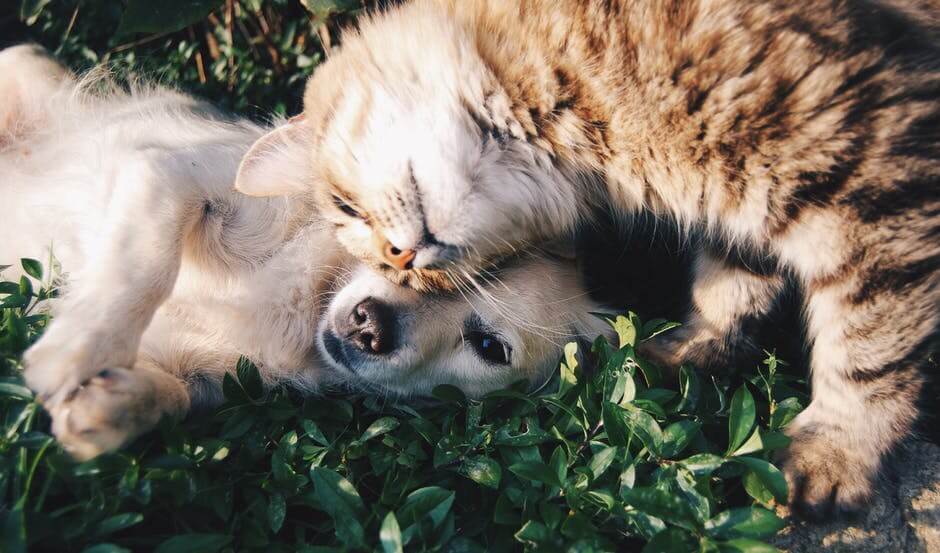Pet hair spreads everywhere. There is no reason for how it ended up in the fridge, or even inside the parcel that the postman just handed over. Static electricity and low humidity (January and February!) make the problem of annoying hair of pets worse. If one can mitigate these two factors, the fur will become less of a problem. We do not exchange our pets for anything, and their beloved attention and company are worth the hairballs. Every pet owner knows that he simply accepts it as a fact of life, but we do not have to lie down and take it: we can find a solution! You can take action to reduce fuzz and simple ways to clean it. When your beloved pet is at home, you probably cannot remove every piece of pet hair. However, following these tips can be of great help to eliminate as much fur as possible.
Managing Your Pet’s Hair
Start with your pet: we cannot snap your fingers and stop fur from coming off, but if you brush your pet twice a week this will help prevent the coarse fur from accumulating in every crack in your home. You can even put a sock or a thin sock over the suction tube, and then put the vacuum tube on your pet. There are no promises that your animal will tolerate it, but it’s worth trying.
Manage the pet’s favorite places: each has its favorite places: under the bed, next to the window, under a table … Put a towel or sheet where they lie more often so that you can shake and wash it periodically. This should help to hold a little hair.
Take fur off your clothes: We all love lint rollers. Keep rollers right next to your door for a quick fur removal session before going to meet friends or go to work. Or put tape on your hands. But if you do not use a drying sheet when you dry your clothes, you are missing some advantages. The sheet removes the hair’s charge so it ends up in the trap of fluff and not in the clothes.
 For large amounts of hair, try to throw your clothes in the dryer, along with dryer sheets for 10 minutes. Or use a dryer ball to be free of chemicals. The movement and the softener dissolve the hair, ending in the trap of fluff. The addition of liquid softeners to the washing machine also helps.
For large amounts of hair, try to throw your clothes in the dryer, along with dryer sheets for 10 minutes. Or use a dryer ball to be free of chemicals. The movement and the softener dissolve the hair, ending in the trap of fluff. The addition of liquid softeners to the washing machine also helps.
Clean the House with Gloves
Pet hair on your couch or on your favorite chair is a common problem for most pet owners. An easy way to remove hair from a fabric sofa begins with a wet rubber glove. Use a latex glove. Wear the glove and then use it to rub the surface that is covered with pet hair. The hair should stick to the glove. This tactic also works with rubber gloves or rubber gardening gloves with rubber lining on the palm. Stroke the glove on the sofas and chairs until the glove is full of hair. Rinse and repeat if necessary. Putting some water on the gloves could increase the effectiveness of this method. There may not be time to clean all the furniture. So, it is a good idea to invest in bedspreads to protect objects.
Angles: angles are difficult to reach with a vacuum cleaner or broom. Try using a Velcro roller that can bend to the corners or use a latex glove so that the fur will be attracted to the glove.
Upholstery
To clean the pet’s hair from the upholstery, use the liner provided with your vacuum cleaner, or try a vacuum cleaner with a motorized blender bar accessory.
Also, try a lint brush.
Remove the animal’s hair from the lining and the fabric with wet rubber gloves by moving your hand over the surface to attract hair. Just rinse the glove when it is covered with hair and repeat if necessary. If you do not have rubber gloves at your fingertips, try a slightly damp sponge. I like this method because it does not consume much tape unnecessarily.
Use a damp cloth or a dry sponge and run it around the furniture with circular movements. This will release the fur (after that, you will want to pass the vacuum cleaner around the furniture). It will also work on the lint brush or the upholstery tool in your vacuum. Lightly wipe a rubber glove, a shoe, or whatever you have, and pass it through the fur. It will collect everything. When the glove is covered, just do more with water to remove the fur and continue until you’ve reached everything.
Dampen a clean kitchen sponge and rub on the area. The fur should be coiled in groups, which can be removed by hand. Or lightly spray a mixture of water and softener on padded furniture and then rub them.
Clean Your Carpet
The rug is usually the most difficult type of place to keep clean when there is a pet at home. Some pet owners have installed the carpet that matches the color of their pets. If you do not want to take such drastic measures, there are other options. Start by vacuuming the carpet. Then sprinkle the carpet with a small amount of water. Take a wet sponge broom and gently slice the carpet on the carpet. Pet hair should be grouped so that it can be thrown away easily.
Rug: Try vacuuming two or more times a week using full suction on your vacuum cleaner. And if you have a high-efficiency particle filter, it’s even better. Check each area twice in different directions. If the fur becomes particularly thin on the carpets, gently slide a pumice stone onto the surface before passing the vacuum cleaner to release the fur. All the hair will join (in addition to this your carpet will not suffer from rough and dry skin this winter). I also used a Fürminator on my carpets, which, if used lightly, scrapes my hair, but does not damage the carpet.
When you pass the vacuum cleaner on the carpet, go over the same areas several times and alternate the directions to loosen the rebellious hair.
Hard Floors
- Use an electrostatic broom on the hardwood and other hard floors. Use a rubber bristle to push the broom on the floor and try this with the broom slightly moistened if necessary. Clean with a broom instead of a vacuum cleaner. Vacuums can cause pet hair and other particles to fall on a hard floor on the surfaces. Additionally, it is important to make sure it is an electrostatic broom. This type of broom will be more effective than a vacuum cleaner when you remove pets’ hair from your hard floor because it will not explode excess hair.
- On tiled floors, a wet cloth seems to work better to remove pets’ hair. Make sure the broom is wet but not too wet, as it may create more of a mess with the hair.
Keep Your Linen Clean
Bedding and quilts: Yes, keeping the animal out of bed is an option, but it may not be the one you want to take. If you are sleeping with your pet, we recommend that you read all of the above tips. Start shaking the quilt and using one of the tips above to remove the remaining hair.
Many of us love our pets to pamper us in bed. It’s a good idea to put a towel or a folded blanket on the usual bedding in your pet’s favorite place. If your pet puts on pillows and blankets, use a drying sheet to remove your pet’s hair. Stroke the dryer sheets over the bedding a few times and the hair usually comes out immediately. The fragrant leaves will also help eliminate the smell of pets and leave the bedroom with a clean, fresh scent. Be sure to wash and dry the sheets and the quilts separately to separate and keep the hair from other objects.
Get the Healthiest Kitchen Possible
Your kitchen is an area that must be the cleanest and most free pet hair. Hold a stack of toothpicks in a small container on the counter when working in the kitchen. Before preparing any food, clean the work surface and the cooking zone with a damp cloth. Then, use the toothpicks to remove loose hair and keep your hands clean while preparing meals.
More Tips on Removing Pet Hair from Furniture and Other Places
- Inflate a balloon and rub it on the surface that has pet hair.
- Use a softener to collect pets’ hair. Or spray the affected surface slightly with a softener and water mixture to “prepare” the area before removing pet hair using other methods.
- Weigh the pets’ hair with water. Put some water in the palm of your hand, and then wipe the hair of the animal from the surface in a downward motion. The hair will rise and cling to your hand.
- To remove pets’ hair from wooden furniture, use a soft cloth and a furniture gloss or an anti-static spray. The spray eliminates the electric charge, facilitating the extraction and decreasing the likelihood that the hair will stick again. You want to get the fur from your furniture and fabric.

